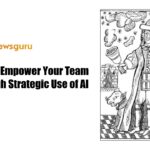Introduction:
In today’s digital world, visuals are incredibly important. Optimizing visuals is key to improving user experience and increasing search visibility. As AI and machine learning continue to advance, brands must adapt to maximize their online presence. This article explores strategies for enhancing brand engagement and visibility.
1. Improving User Experience for Performance and Engagement
Improving user experience goes beyond looks; it directly affects performance, visibility, and engagement. When users have a good website experience, they stay longer, explore more, and engage more. To achieve this, optimize assets by using clear file names and embracing WebP or AVIF formats. Also, use high-resolution images and follow Google’s safe search guidelines to enhance user experience.
2. Using Visual Search Tools
AI and machine learning have revolutionized visual search. These technologies allow search engines to analyze and interpret images for more accurate and relevant results. Stay ahead by optimizing visual content for better search visibility. Label, tag, and describe images properly to increase the chances of appearing in relevant searches.
3. Centralization and Optimization: A Case Study
A case study on centralization, optimization, and entity definition shows promising results. Centralize digital assets in a Digital Asset Management (DAM) platform for easy maintenance and consistency across channels. Additionally, optimize images with relevant text, structured data, alt tags, and appropriate file names to boost visibility and impressions.
4. The Importance of Relevance in Visual Optimization
Relevance is crucial in visual optimization. Place images near relevant text and use descriptive alt-text to help search engines understand context and relevance. Employ entity optimization and structured data/schema to improve relevance and secure higher search rankings. Align visual content with user intent to capture attention and drive engagement.
5. Utilizing Google’s AI-driven Tools and Benchmarks
Google uses advanced AI models to identify exceptional digital assets. Align optimization strategies with Google’s benchmarks to meet their AI-driven algorithm’s standards. Utilize tools like Google Images, Google Lens, and Google Search Console to maximize visibility and stay competitive.
6. The Future of Visual Optimization
Visual optimization will remain crucial as technology advances. Emerging visual search trends and advancements in language models present exciting possibilities for brands willing to adapt. Stay updated on trends and embrace new technologies to position for future success.
Conclusion:
In a visually-driven era, visual optimization is essential for improving user experience, search visibility, and brand success. Implement advanced SEO techniques, centralize assets, optimize relevance, and stay informed on evolving trends to enhance online presence. As AI-powered visual search tools continue to advance, the future holds great promise for effective visual content optimization. Stay ahead, adapt, and conquer the digital landscape with visual optimization.











